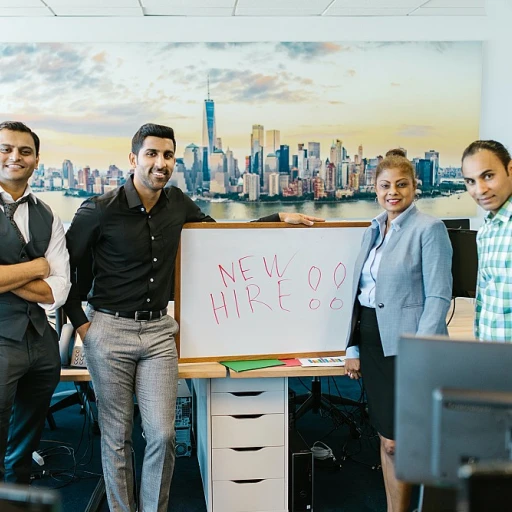Understanding Crew Self-Service Platforms
Unveiling the Essence of Self-Service Interfaces for Crew
Crew self-service platforms have emerged as vital tools in streamlining various operations within organizations. These platforms, such as bassnet and hagroup, provide crew members the essential functionality they need through an app, allowing them to efficiently manage their tasks. At their core, these platforms utilize data integration, enabling seamless content sharing, whether it's about travel details or work schedules.
The self-service aspect of these systems is powered by sophisticated software that facilitates user access to important information. By employing mechanisms like content management and server interactions, crew members can view necessary content length parameters, ensuring all tasks are updated and available in real-time.
A key feature of these platforms is their integration with crew portals, often leveraging technology like asp net, to improve the delivery of services without a hitch. This involves critical elements such as cache control, ensuring the freshness and relevancy of data retrieved by crew members. Additionally, utilizing algorithms like sha withrsaencryption enhances the security of data transmissions, safeguarding sensitive information against unauthorized access.
Efficiency doesn’t stop at functionality; it extends to content type and css sculpture, ensuring the information provided is easy to digest. As more departments aim to create a better employee experience, understanding the underpinnings of crew self-service platforms becomes crucial. For a deeper dive into how AI intersects with HR communication, learn more here.
The Role of Artificial Intelligence in Crew Self-Service
The Integration of Artificial Intelligence in Streamlining Processes
Artificial intelligence plays a crucial role in enhancing crew self-service platforms by streamlining various processes and improving efficiency. Through advanced algorithms like SHA and signature algorithms such as SHA WithRSAEncryption, AI facilitates a seamless interaction framework for crew members utilizing these platforms. AI-powered applications, like those compatible with ASP.NET versions and developed by notable software providers such as CrewSS HAGROUP, enhance self-service functionalities by optimizing data processing. This ensures that crew members have quick access to information, reducing the need for manual intervention. The efficiency gains extend to the server and network levels, optimizing cache control and data retrieval. Using AI, crew websites can offer a personalized experience, drawing insights from global rank metrics and analysis of content length. Customization based on algorithm-driven data analysis augments the employee's ability to access relevant services swiftly. By categorizing content types and utilizing automated CSS coding standards, these platforms can deliver a user-friendly interface that accommodates crew needs. Moreover, AI's application in crew service platforms extends to travel management, from signing up for duty to viewing detailed itineraries. Algorithms ensure accurate and secure data management, leveraging type charset configurations and managing TTL types. This aspect is particularly useful for bassnet travel services, as crew members can efficiently manage their schedules and requirements via the app. Improving the crew's experience, crew portal platforms utilize AI to support dynamic adjustments and maintain authoritative scores for performance metrics. This adaptability, energized by AI insights, ensures crews can focus on their essential tasks with minimal disruption. For an exploration of how AI is deeply embedded within HR communication systems, you can delve into the significant changes occurring within this domain.Benefits of Crew Self-Service for HR Departments
The Benefits of Seamless Access to Information and Tools
Integrating crew self-service platforms into HR departments offers numerous advantages that can streamline operations and enhance employee engagement. One of the primary benefits is providing seamless access to a variety of resources, from viewing personal data to managing travel details, all within a secure app environment. These self-service solutions enable crew members to easily sign in to platforms like the crew portal, bassnet, or css, granting them the ability to access content type and work-related information anytime, anywhere.
Efficiency Gains and Cost Reduction
Through efficient use of software and data, self-service platforms drastically reduce the administrative workload on HR departments. This not only lowers operational costs but also allows HR professionals to focus on more strategic initiatives. With the capability to cache control and manage size bytes of data effectively, these platforms ensure swift content delivery without compromising on security. Utilizing asp net and algorithms such as sha withrsaencryption issuer, the systems maintain robust security protocols.
Improving Communication and Transparency
Another significant benefit is improved communication and transparency. Crew members can instantly access updates, notifications, and important information without having to wait for HR interventions, enhancing the overall employee experience. The ability to control content length and authority score ensures that information disseminated is concise and trustworthy, promoting transparency and trust within the organization.
Data-Driven Decision Making
HR departments can leverage the global rank and ttt type data from these self-service platforms to make informed decisions. The integration of advanced technologies like the aspnet version and type charset further supports HR in monitoring employee engagement and identifying areas for improvement. This data forms the basis for enhancing the employee journey, allowing HR to tailor services and communicate effectively.
For more insights on how AI can enhance the employee journey, explore further complex interactions between AI and HR operations.



